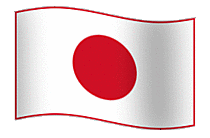![]() ASEAN Plus Three Emergency Rice Reserve
ASEAN Plus Three Emergency Rice Reserve
![]() ASEAN Plus Three Emergency Rice Reserve
ASEAN Plus Three Emergency Rice Reserve


The ASEAN Plus Three Emergency Rice Reserve (APTERR) is a regional cooperation established under the APTERR Agreement signed by the Ministers of the Agriculture and Forestry of the ASEAN Plus Three at the 11th Meeting of the ASEAN Minister on Agriculture and Forestry Plus Three (AMAF+3) on 7 October 2011 in Jakarta, Indonesia. The APTERR was officially established itself as a permanent mechanism and also marked the official launch of the APTERR Secretariat office in Bangkok in 2013.
We are keen to strengthen food security, poverty alleviation, and malnourishment eradication among its members without distorting normal trade, while the common goal of the APTERR Parties is the assurance of food security in the ASEAN+3 region.













400 MT
300 MT
3,000 MT
Total :3,700 MT
500 MT
3,000 MT
Total :3,500 MT
322 MT
4,000 MT
Total :4,322 MT
Natural Disasters

WEEKLY UPDATE ON NATURAL DISASTERS
IN ASEAN PLUS THREE
No. 443 ![]()
12 – 18 November 2025
Indonesia suffered from a series of natural disaster. On 12 November 2025, a 5.1-magnitude earthquake struck Papua Island in eastern Indonesia, but no damage or casualties were reported. The next day, a landslide occurred in Majenang District, Cilacap Regency, Central Java, resulting in 13 deaths, nine injuries, 10 people missing, and 106 displaced. Further, there were reports of sixteen houses destroyed, and an additional 46 individuals affected. Local authorities were deployed to assist residents, and evacuation centres were established. Cilacap Regency declared a 30-day state of emergency for floods and landslides. On 18 November 2025, Mount Semeru erupted in Lumajang District and Malang District in East Java, with the ash column reaching 800 metres above its summit. The volcano’s alert level remained at Level II, and residents were advised to stay away and remain alert.
Source: Gulf Times. (2025, Nov 12). 5.1-magnitude earthquake strikes Eastern Indonesia; ReliefWeb. (2025, Nov 17). Indonesia-Landslide, update (BNPB, ADINet, BMKG)(ECHO Daily Flash of 17 November 2025)- Indonesia; Antaranews. (2025, Nov 18). Mount Semeru erupts, ash column reaches 800 meters.
Thailand warned of cold weather and flash floods. On 18 November 2025, the Thai Meteorological Department (TMD) announced a warning of cool to cold weather with strong winds in the upper regions from 19 to 20 November 2025, advising residents to beware of potential fire hazards caused by dry and windy weather. Meanwhile, widespread heavy rain and isolated very heavy rain were forecast from 18 to 23 November 2025 due to the strengthening northeasterly monsoon over the Gulf of Thailand, the South, and the Andaman Sea. People in southern provinces were advised to watch for flash floods and run-off. Mariners were urged to be cautious and avoid sailing in areas with thunderstorms, while small boats were advised to remain ashore.
Source: The Nation. (2025, Nov 18). Thai Met Department issues latest warning of very heavy rain in the south.
Downpours and landslides impacted several provinces in Viet Nam. As of 18 November 2025, torrential rainfall triggered floods and landslides across central Viet Nam, resulting in 14 people dead or missing. Khanh Hoa Province was the most affected with seven deaths, two people missing, and one injured. Losses were also reported in Da Nang, Quang Tri, and Hue. Around 14,924 houses were submerged, while floods caused damage to agriculture and livestock. Local authorities evacuated approximately 5,900 people to safer places and deployed relevant agencies to support affected communities in flood prevention, response, and recovery.
Source: VOV. (2025, Nov 18). Floods, landslides hit Central Vietnam again, 14 dead or missing.
A series of Sakurajima volcano eruptions disrupted several flights in Japan. On 16 November 2025, Sakurajima Volcano, located on the southern tip of Kyushu Island near the city of Kagoshima, Japan, erupted three times, producing a plume about 4,400 metres high. No damage was reported. However, around 30 flights to and from Kagoshima Airport were cancelled. Due to the forecasted ashfall in parts of Kagoshima and Miyazaki prefectures, residents were advised to use umbrellas or masks outdoors and to drive slowly on the roads. The alert level remained at three on a five-level scale, which restricts access to the mountain but does not require evacuations.
Source: TTG Asia. (2025, Nov 18). Southern Japan monitors ashfall after Sakurajima eruptions.
Rice Situation

WEEKLY UPDATE ON ASEAN PLUS THREE
RICE SITUATIONS
No. 443 ![]()
12 – 18 November 2025
Brunei Expands Rice Milling Capacity as Wasan Milling Company (WMC) Doubles Capacity. Brunei’s national rice milling facility capacity has more than doubled following the successful upgrade, which includes a new milling line along with four vertical dryers, three 850-tonne silos, and an automated vacuum seal packaging system. The upgrades add 7 tonnes of hourly milling capacity, increasing WMC’s output to 7,920 metric tonnes per year, equivalent to approximately 38 percent of national demand. WMC’s new vacuum-sealed packaging is expected to extend the shelf life of locally milled rice.
Source: Biz Brunei. (2025, November 13). Wasan Milling Company more than doubles national milling capacity.
Brunei Aims for 20 percent Rice Self-Sufficiency by 2027. Brunei has set a target to raise rice self-sufficiency to 20 percent by 2027, up from 8 percent in 2024, as part of the six key national efforts to strengthen food security and reduce import dependence. Wasan Milling Company (WMC), the country’s sole commercial rice miller and a government-owned entity under Darussalam Assets, will play a key role by supporting local farmers by processing their paddy into rice for sale to the local market. Moreover, WMC has boosted mechanisation and adopted new technologies, including AI pest monitoring and drone-based precision farming.
Source: Biz Brunei. (2025, November 13). Wasan Milling Company more than doubles national milling capacity.
Thailand’s rice sector is losing its global competitiveness due to a decline in production. Thailand’s rice sector is facing renewed crisis, with yields per rai falling, production costs rising, and both domestic and export prices plunging — the latter to a 15-year low. Analysts say these trends reflect a sharp decline in the country’s global competitiveness. Moreover, a Senior Fellow at the Knowledge Network Institute of Thailand warns that 14 years of recurring government policies, including rice-pledging, income guarantees, and per-rai subsidies, have cost over 1.2 trillion THB while trapping farmers in a cycle of dependence. These measures have discouraged technological upgrades and productivity improvements.
Source: Nation Thailand. (2025, November 14). Thai rice sector in crisis as yields fall, costs rise and export prices hit 15-year low.
Thai rice prices decline while costs rise. Thai rice farmers are facing sharply falling paddy prices, with common white paddy dropping from just over 10,000 THB (308.02 USD) per tonne last year to below 8,000 THB (246.42 USD), and high-moisture freshly harvested paddy selling for only 5,000 – 6,000 THB (154.01 – 184.81 USD), which is below the production costs. Thailand’s average production cost of 7,200 – 7,500 THB (221.78 – 231.02 USD) per tonne is significantly higher than Vietnam’s and India's. As a result, many farmers are now breaking even or losing money, with only those using improved varieties and modern techniques able to survive. and farming has become high-risk and increasingly fragile, trapping Thai households in middle-income stagnation.
*1 USD = 32.47 THB
Source: Nation Thailand. (2025, November 14). Thai rice sector in crisis as yields fall, costs rise and export prices hit 15-year low.
Copyright © 2023 apterr.org All Rights Reserved.